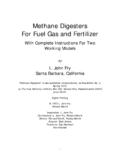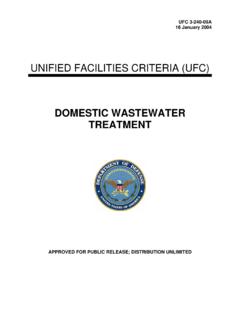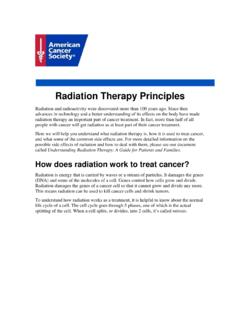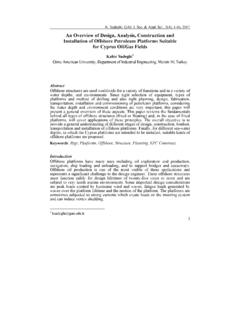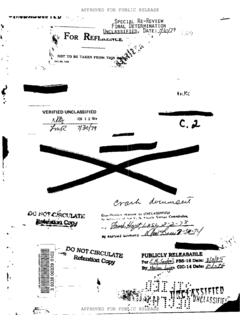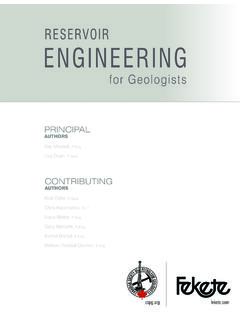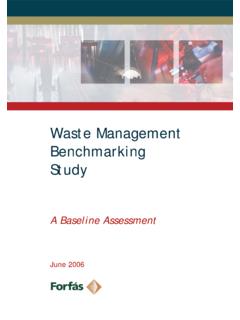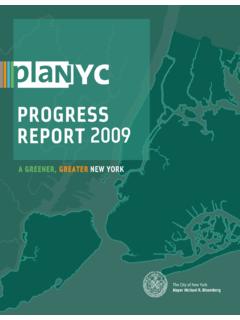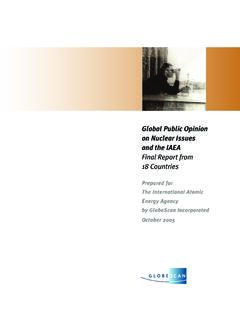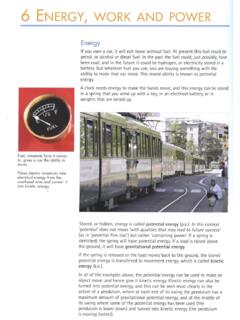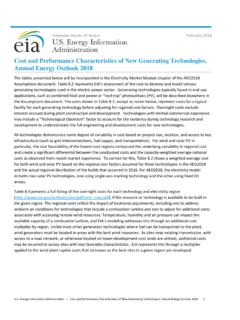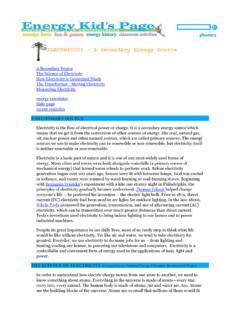Transcription of FORGING - Stanford University
1 Vysok kola b sk Technick univerzita Ostrava FORGING Didactic Text Miroslav Greger Ostrava 2014 Description: FORGING Author: Miroslav Greger Edition: first, 2014 Pages: 176 Academic materials for the Metallurgy engineering study programme at the Faculty of Metallurgy and Materials Engineering. Proofreading: none. Project designation: Operation Programme of Education towards Competitive Strength Description: ModIn - Modular innovation of bachelor and subsequent master programmes at the Faculty of Metallurgy and Materials Engineering of V B - TU Ostrava Ref. No.: Realisation: V B Technical University of Ostrava Miroslav Greger V B Technical University of Ostrava 1 Contents 1. Current trends and developments in open die FORGING of large forged pieces .. 2 2. Metal forming machines .. 17 3. Heating in forges.
2 27 4. Heating furnaces and heating in forges .. 36 5. Level of through- FORGING and basic FORGING operations .. 45 6. Effect of FORGING procedure on closing imperfections in forgings .. 63 7. Technological procedures for FORGING of longitudinal forged pieces .. 72 8. Drop FORGING on hammers .. 84 9. Technological procedure for drop FORGING .. 95 10. Drop FORGING on presses .. 106 11. Drop FORGING on horizontal FORGING machines .. 114 12. Heat treatment and requirement to properties of forgings .. 127 13. Defects of forgings .. 136 14. Consumption of energy in forges .. 149 15. Die FORGING perspectives .. 161 2 1. Current trends and developments in open die FORGING of large forged pieces Chapter contents: Production assortment of forges in the Czech Republic Forges in the Czech Republic Foreign manufacturers and suppliers of open die forgings Time needed for studying: 90 minutes Aim: After studying this chapter you will Gain a basic idea of assortment of manufactured forgings Become acquainted with the FORGING industry abroad Gain an overview of manufacturers of open die forgings in the Czech Republic Explication At present the demand for large open die forgings has decreased.
3 New investments for building-up new facilities of large FORGING shops depend on current orders. The article surveys the state of chosen FORGING plants both in the world and in the Czech Republic. The forges for manufacture open die forgings have a wide spectrum of products, in terms of shape and size, materials, and the spectrum of customers. There is a single-part production or short-run production at best. Most forgings are intended for external customers in machined and unmachined states. Only of a small part of forgings, we can say that the interest in them is stable. Sales of the most of them vary during long periods. As a typical example of that fact we can mention forgings for nuclear power plants. 30-40 years ago the capacity of the most of our manufacturers of open die forgings were overloaded by them, and then the interest in them dropped almost to zero, but recently the interest has increased again.
4 Large fluctuations in demand occur also with forgings for shipbuilding industry and with certain other FORGING groups. 1. General development trends As for the machinery is concerned only power hammers for smaller forgings were kept and from approximately 1 tonne and more they were replaced by small presses. Moreover, the number of radial FORGING machines even for large cross-section rods and bars has increased. In the last 10 years 30 FORGING presses of press power greater than 100 MN at least have been built, which was usually related to expectations of a boom in the field of nuclear energy. FORGING manipulators have become commonplace even in the largest FORGING presses. In the 3 forges, in the assortment of which rods and bars forged on presses predominate, there are installed two FORGING manipulators on the only one press.
5 In some forges there oxy-cutting machines were installed for cutting forgings ends or for their possible dividing. As regards the starting material in smaller forgings manufacture of semi-finished casting products have broken through. Today it is possible to make semi-finished casting products up to their diameter of 800 mm, which can replace even rather large ingots. It has become commonplace to insulate even more better ingots heads, which makes it possible to work with less waste. And the electroslag remelting of ingots, mainly from tool steel has spread. And the proportion of special steels and alloys has increased too. The assortment of forgings is largely unchanged. However, the proportion of smooth forged roll and square bars and even bars and rods of large cross sections has increased. Requirements on quality and on the extent of testing have increased in the long-term, as well.
6 Demands on quality are mainly related to the branches for which the forgings are destined. The unpleasant fact is that in many cases it is necessary to change over to some larger types which require larger sizes of forgings, which make achieving the necessary quality parameters more difficult. The forges manufactured open die forgings have some fields with guaranteed sales of these forgings. In the first place there is today the power engineering that can be classified into thermal power plants, nuclear power plants and wind-power plants. For thermal power plants there are manufactured primarily shafts for turbines and generators . It is a number of sizes, and it is required not only a high purity of steel but also mechanical properties reachable with difficulties for reasons of very large diameters of these shafts. However, the interest in these forgings is quite stable.
7 For nuclear power engineering there is manufactured a wide range of forgings. The challenging forgings include forged pieces with sockets, shaped bottoms, tube plates, parts of piping, and others. The interest in forgings in this branch is very changeable. For wind-power plants there are forged namely shafts and rings (Fig. 1). The FORGING for wind-power plant 2. Development of free forges abroad For FORGING of the largest forged pieces, for a pressure vessel of the EPR reactors AP1000 the required press power is 150 MN and an ingot weight 350 t, at least. In these days some suitable capacities for FORGING heavy forged pieces can be found out in Japan (Japan Steel Works), in China (China First Heavy Industries and China Erzhong) in the South Korea (Doosan), in France (Le Creusot), in Russia (OMZ Izhora.)
8 , and partly also in the Czech Republic (Pilsen steel, V tkovice Heavy Machinery). New premises are planned in 4 the Great Britain (Sheffield Forgemasters), in India (Larsen & Toubro, Bharat Forge Ltd.). The overview of the producers of large forged pieces is given in the Table 1. Table 1. The overview of big manufacturers of open die forgings, FORGING presses and max. weights of forged ingots Country, region Company FORGING presses[MN] till 2010 FORGING presses[MN] after 2013 Max. ingot weight [t] (2013) Japan Japan Steel Works 140 140 x 2 600 (650) JCFC 130 500 South Korea Doosan 130 170 540 China CFHI 150; 125 the same 600 Harbin Boiler 80 the same - Shanghai (SEC) 120 165 600 China Erzhong + Dongfang 127; 160 the same 600 India L&T 90 150 600 (in the year 2011) BHEL 100 - Bharat Forge 140 - Europe Areva, SFAR steel 113 the same 250 Sheffield 100 150? 500 ?
9 Pilsen Steel 102 120 200 (250) V TKOVICE 120 the same 250 Saarschmiede the same 200 Russia OMZ Izhora 120 150 600 The Lehigh 100 the same 270 Japan Steel Works (JSW) The biggest and most famous supplier of heavy forgings is the Japan Steel Works (JSW). They produce large forgings for reactor pressure vessels, steam generators , turbine shafts, ship drive shafts, and they supply 80% of the world market by large forged parts for nuclear power plants. The JSW operate hydraulic FORGING presses from 30 to MN 140 MN in their plant in Muroran, and they also supply steel ingots up to 600-ton made in their own steel plant (Fig. 1). In the year 2010 they put into operation the second FORGING press of 140 MN. The forge supplies other components for nuclear power plants and shipbuilding industry: pressurizers, generators and turbine rotors, crankshafts, piping for primary circuits of nuclear power plants and steel rolls (Fig.)
10 3) and other large forgings. At the present time for forgings of large rolls for work in cold state there are increasingly used steels of higher strength as 5% Cr-Mo steel which hardness is about 70 HRC, which increases their wear resistance [1]. 5 Fig. 2 Ingot of weight 600 t Fig. 3 Machined FORGING of a roll of steel 5% Cr Mo The steel is melted and refined in a 120-ton electric arc furnace, the content of gases and impurities can be reduced by ladle refining and then it is cast in vacuum. Maximum ingot weight is 600 t, it is the heaviest in the world. For the treatment of high alloy steels and alloys there is used electroslag remelting (ESR) to 100t. After heating to the upper FORGING temperature the ingots are forged on a selected hydraulic press. The forge disposes of presses 30 MN, 80MN and of two presses 140 MN. After finish FORGING a preliminary heat treatment is performed.
